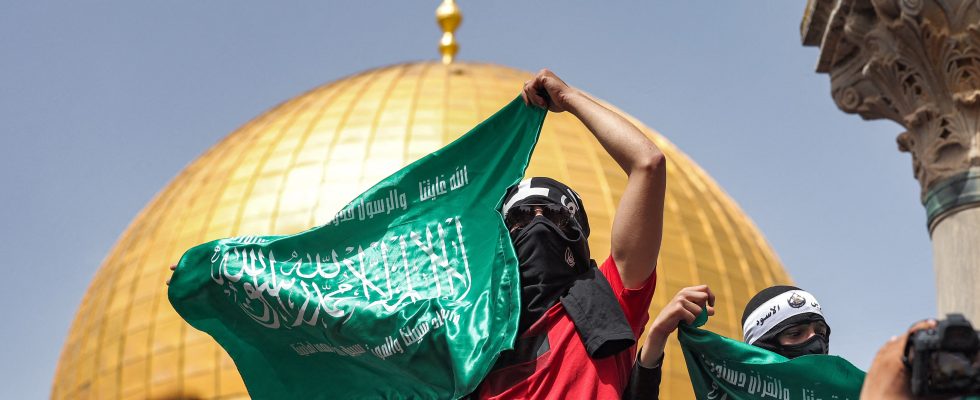It’s a black and white keffiyeh, stained with a few droplets of blood. It sits near a pile of black garbage bags, chairs and broken furniture. “The remnants of last night’s battle,” proclaims a young Palestinian, throwing new broken objects on the small heap.
During the night of Tuesday to Wednesday, Israeli riot police entered the Al-Aqsa mosque, the third holiest site in Islam. It violently arrests 350 Palestinians and evacuates hundreds of others. Some calmly, others with truncheons. “We stay in the mosque for Ramadan, these evenings are called I’tikaf, the spiritual retreat,” said Abdelkarim Krieym, a Palestinian pensioner who witnessed the arrests. “They started firing tear gas and hitting the reciters of the Koran, he continues, seated around the holy book of Islam with his friends. However, the Jews do not come to the enclosure at night. The Israelis simply want to empty the mosque of its Muslims…” The images of the violent irruption of the Israeli police will quickly go around the world and provoke the anger of the Palestinians, with chain reactions.
This year, Passover and Ramadan collide
For the Israeli police, the Palestinians entrenched in Al-Aqsa were “rioters” who were preparing to cause a new conflagration. On the images it broadcasts, we see several groups of young people, armed with stones and fireworks, some of which explode in the mosque. The day before, Hamas, the Islamist movement in power in the Gaza Strip, had issued warnings: if Jews came to sacrifice an animal on the Esplanade (or Temple Mount, a sacred place in Judaism), it would be a provocation of too much. Because for the second consecutive year, the dates of Passover, the Jewish Passover, collide with those of Ramadan.
On Palestinian social networks, other videos, filmed by the entrenched worshipers, feed the continuous flow of shares. In the darkness of the mosque, lit by the flashlights of the Israeli police, they beat up the faithful. One of them shows a policeman crushing a plastic chair on the head of a Palestinian. According to the Red Crescent, 37 people were injured that night. A shock for Muslims around the world, which recalls the symbolic power of Al-Aqsa, the largest mosque in Jerusalem.
Armed response and fragile status quo
In the hours that followed, a few dozen rockets were fired from the Gaza Strip, almost all intercepted by the Israeli missile defense. Then the next day, after another evening of violence on the Esplanade, around 30 rockets were fired from Lebanon, a first since 2006. Israel accuses Hamas of having ordered the firing from the enemy country.
Tensions in Jerusalem do not appear to be easing anytime soon. Every day, groups of Jews, escorted by the police, go up to the Esplanade and pass in front of the dome of Al-Aqsa. Under the status quo enacted by Jordan in 1967, when Israel annexed East Jerusalem, non-Muslims have the right to go to the Esplanade but at dedicated times and with the prohibition to pray there. However, for several years, these visits by the Jewish faithful have multiplied. Officially, they can pray silently. In effect, they begin to speak praise out loud. Their presence electrifies the Esplanade and weakens the status quo that is supposed to preserve calm.
“There is no reason to ban Jews from praying on the Temple Mount, our sanctuary stood here two millennia before Islam became a religion. The number of Israeli visitors is constantly increasing because our people feels more and more connected with this place”, rejoices Arnon Segal, activist for the reconstruction of the Temple of Jerusalem and author of a book on the subject.
This year again, radical Jewish groups, supporters of the Third Temple, had promised financial rewards to their supporters if they managed to sacrifice a lamb or a kid on the Temple Mount. Wednesday morning, after the violent arrests of the day before, two young Jews were turned back by the Israeli police near the holy place, a goat under their arm.
